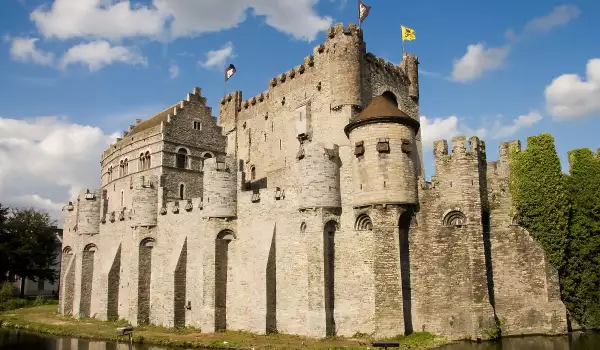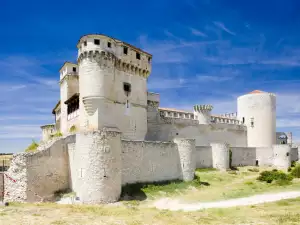Gravensteen Castle

Gravensteen is a well preserved medieval castle, located in Ghent in the Flemish region of Belgium. In a literal translation, the palace means "castle of the Count."
Medieval Ghent was one of the largest and most prosperous cultural and commercial ports throughout Europe. Today in the legacy of these times in this port city are other unique buildings, among which stands out Gravensteen.
Gravensteen was built somewhere around 1180 by Count Philip of Alsace. It is part of many such buildings in the country at that time because the Counts were to erect palaces in all parts of their possessions. Thus, wherever they go, they had a place to sleep comfortably, exercising and maintaining law and order in the country.
Of all the castles that were built only Gravensteen building in Ghent has managed to be preserved through the centuries and stay largely intact. Historians believe that 1000 portions of this most oldest buildings can still be found in the foundations of the lower floors of the main tower, as well as in the large fireplace and the accompanying stack.
Prince Philip of Alsace was involved in one of the crusades and died during the siege of Akko in the Holy Land. The presence of a cross just after the main entrance of the castle Gravensteen proves that the Count is taking part in the Crusades and the construction of the palace.

Gravensteen certainly functioned at the central headquarters of the grave in the early Middle Ages. This is evident of the tower as of Donjon architecture is present. Today, most tourists come to see the castle and most climb to the top of it to see the incredible view, which opens to the town and the whole area.
The castle is located in a rectangular area, which was once were public executions were held. Over the centuries the castle's massive walls have served many different purposes. At some stage it was used as a prison. Then abandoned, and its stone blocks have been looted and used for the construction of smaller buildings around it. In the 19th century it even housed a factory for cotton.
In 1885, urban leadership took up the restoration of Gravensteen, partly destroyed walls were fully recovered, and small houses around it removed. After this local restoration it was claimed that none of the authentic appearance of the castle was left.
Today, beyond the stone wall is Gravensteen museum, where you can see the authentic instruments of torture used during the Middle Ages. A curious fact is that Queen Margrethe of Denmark annually visits family here for vacation.















